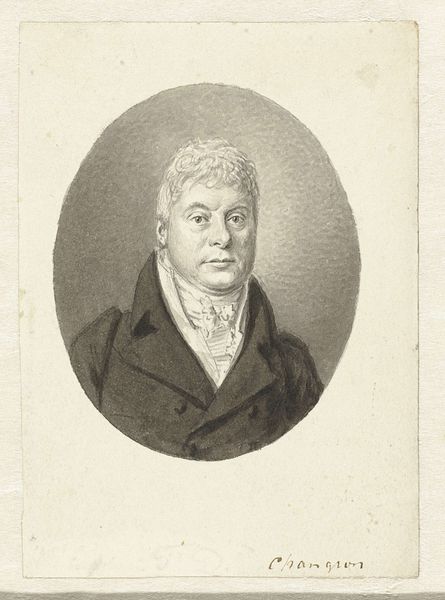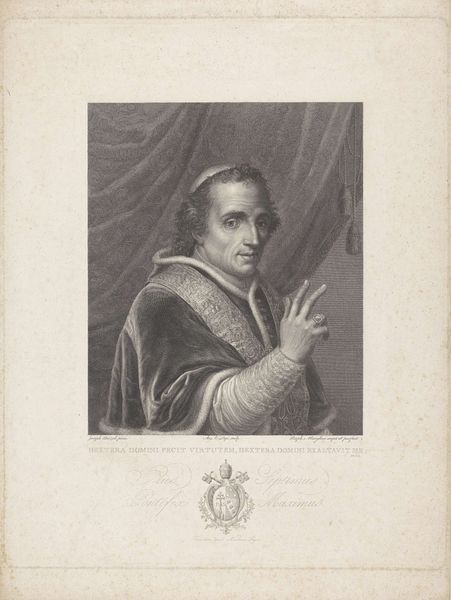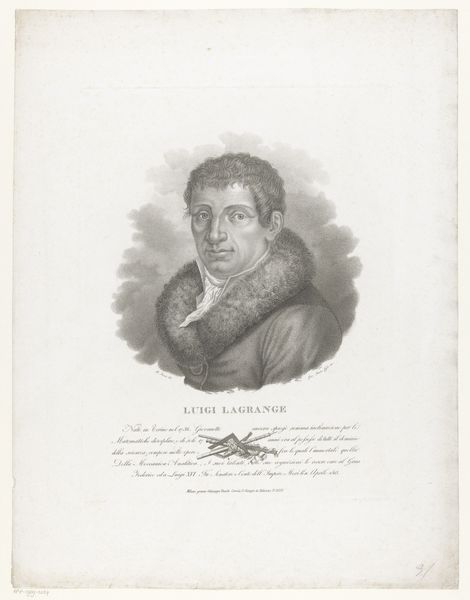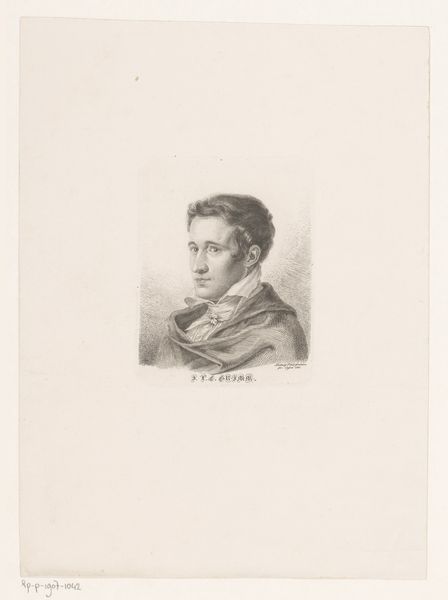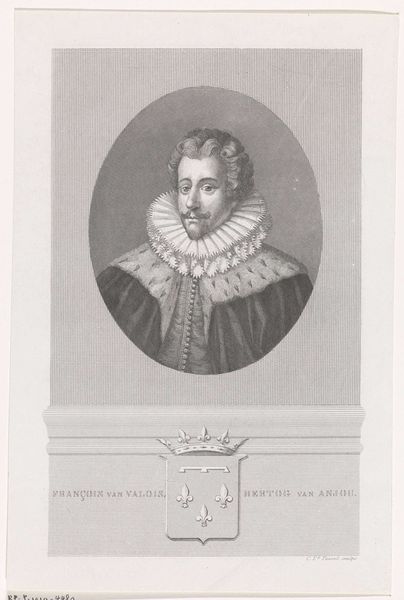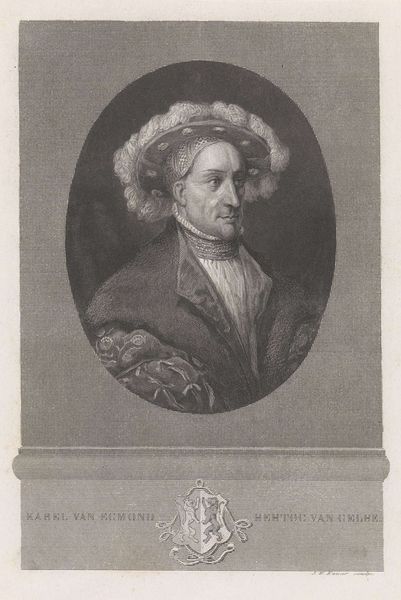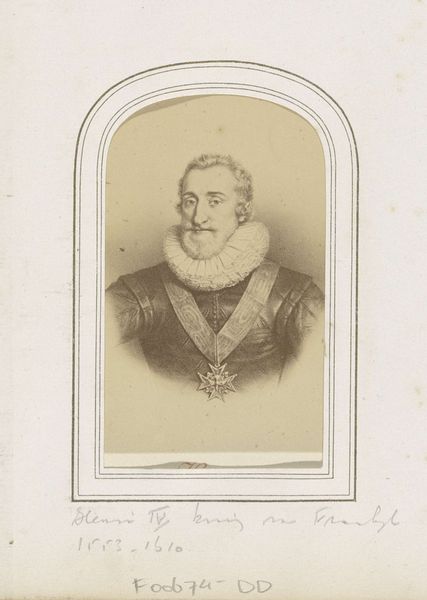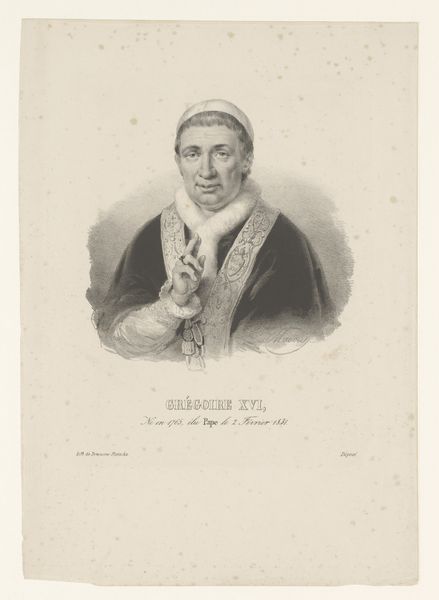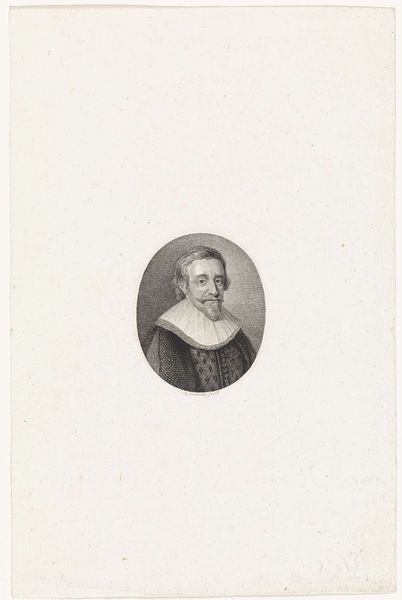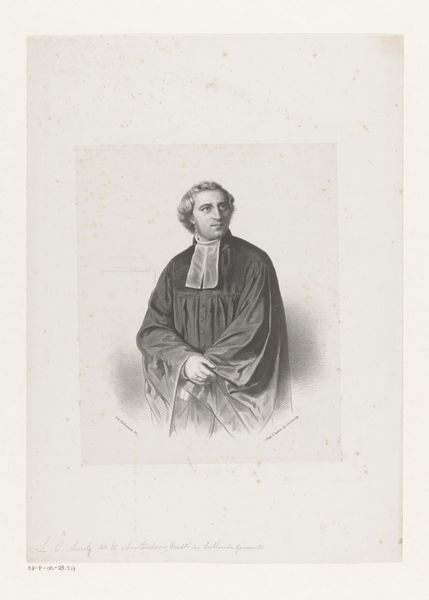
print, engraving
#
portrait
#
16_19th-century
# print
#
history-painting
#
northern-renaissance
#
engraving
#
realism
Dimensions: height 253 mm, width 164 mm
Copyright: Rijks Museum: Open Domain
Curator: This is "Portret van Albrecht III van Saksen," a stately engraving crafted between 1847 and 1849 by Jan Frederik Christiaan Reckleben. It currently resides here at the Rijksmuseum. Editor: Immediately, I’m struck by how weighty it feels. There’s a somber gravity to the piece; all those lines and that dense fur collar lend such a texture to it, and a sense of wealth. Curator: The visual weight comes in part from the careful process of engraving. Consider the labor involved: the artist meticulously incising lines into a metal plate, creating a matrix to reproduce this image. It’s fascinating how such a reproductive medium aims for such a unique presentation of wealth, but I think the quality of fur gives that away as well. Editor: It really does dominate the portrait. That fur practically screams status and authority, doesn't it? Fur has always carried potent symbolic weight across cultures—warmth, protection, connection to nature, but above all, power and privilege. And of course we can see those family crests as well. Curator: Precisely. Fur represented access, and privilege. Reckleben's process choices, that focus and craftwork, point toward a clear market intended to uphold such signs of class. Editor: And the framing, that oval and the faux-stone tablet. Classicism! It positions Albrecht as timeless, a figure to be revered beyond his immediate historical context. You have that strong link to ancestry—all carefully manufactured to add up to undeniable legitimacy. Curator: Right, the manufactured nature is crucial. This wasn't about capturing a likeness in passing but about reinforcing a very particular social structure, even in that coat of fur! An appeal, one might say. The materials, techniques and display of such engravings shaped public perceptions. Editor: Looking closer reveals more hidden-in-plain-sight symbols, embedded cultural stories. Thinking about Albrecht’s life in relation to those of the emerging merchant class, for example, and seeing how even images play a role. Curator: Exactly! Examining this print has offered insights into not only the techniques that made this kind of portraiture a tool for creating impressions, but also how history and symbolism intertwine. Editor: It truly reveals how symbols—carefully placed and repeated over time—shape not only how we see the world but also how we perceive history itself.
Comments
No comments
Be the first to comment and join the conversation on the ultimate creative platform.

